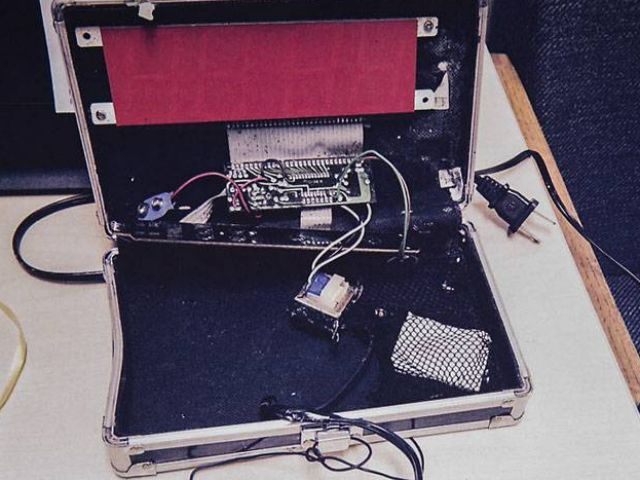In his own words, the Muslim Brother:
“I will stand with the Muslims should the politicall winds shift in an ugly direction”, page 261 of his book: The Audacity of Hope
Written by Mike Gallagher, an American radio host and conservative political commentator. He is the host of The Mike Gallagher Show.
Many listeners have asked about the, “Obama: It Was You,” essay that someone sent me. Here it is:
President Obama: This is why you didn’t go to France to show solidarity against the Muslim terrorists:
It was you who spoke these words at an Islamic dinner – “I am one of you.”
It was you who on ABC News referenced – “My Muslim faith.”
It was you who gave $100 million in U.S. taxpayer funds to re-build foreign mosques.
It was you who wrote that in the event of a conflict -“I will stand with the Muslims.”
It was you who assured the Egyptian Foreign Minister that – “I am a Muslim.”
It was you who bowed in submission before the Saudi King.
It was you who sat for 20 years in a Liberation Theology Church condemning Christianity and professing Marxism.
It was you who exempted Muslims from penalties under Obamacare that the rest of us have to pay.
It was you who purposefully omitted – “endowed by our Creator” – from your recitation of The Declaration Of Independence.
It was you who mocked the Bible and Jesus Christ’s Sermon On The Mount while repeatedly referring to the ‘HOLY’ Quran.
It was you who traveled the Islamic world denigrating the United States Of America.
It was you who instantly threw the support of your administration behind the building of the Ground Zero Victory mosque overlooking the hallowed crater of the World Trade Center.
It was you who refused to attend the National Prayer Breakfast, but hastened to host an Islamic prayer breakfast at the WH.
It was you who ordered Georgetown Univ. and Notre Dame to shroud all vestiges of Jesus Christ BEFORE you would agree to go there to speak, but in contrast, you have NEVER requested that the mosques you have visited adjust their decor.
It was you who appointed anti-Christian fanatics to your Czar Corps.
It was you who appointed rabid Islamists to Homeland Security.
It was you who said that NASA’s “foremost mission” was an outreach to Muslim communities.
It was you who as an Illinois Senator was the ONLY individual who would speak in favor of infanticide.
It was you who were the first President not to give a Christmas Greeting from the WH, and went so far as to hang photos of Chairman Mao on the WH tree.
It was you who curtailed the military tribunals of all Islamic terrorists.
It was you who refused to condemn the Ft. Hood killer as an Islamic terrorist.
It is you who has refused to speak-out concerning the horrific executions of women throughout the Muslim culture, but yet, have submitted Arizona to the UN for investigation of hypothetical human-rights abuses.
It was you who when queried in India refused to acknowledge the true extent of radical global Jihadists, and instead profusely praised Islam in a country that is 82% Hindu and the victim of numerous Islamic terrorists assaults.
It was you who funneled $900 Million in U.S. taxpayer dollars to Hamas.
It was you who ordered the USPS to honor the MUSLIM holiday with a new commemorative stamp.
It was you who directed our UK Embassy to conduct outreach to help “empower” the British Muslim community.
It was you who embraced the fanatical Muslim Brotherhood in your quest to overthrow the Egyptian President, Hosni Mubarak.
It was you who funded mandatory Arabic language and culture studies in Grammar schools across our country.
It is you who follows the Muslim custom of not wearing any form of jewelry during Ramadan.
It is you who departs for Hawaii over the Christmas season so as to avoid past criticism for NOT participating in seasonal WH religious events.
It was you who was un-characteristically quick to join the chorus of the Muslim Brotherhood to depose Egypt’s Hosni Mubarak, formerly America’s strongest ally in North Africa; but, remain muted in your non-response to the Brotherhood led slaughter of Egyptian Christians.
It was you who appointed your chief adviser, Valerie Jarrett, an Iranian, who is a member of the Muslim Sisterhood, an off-shoot of the Muslim Brotherhood.
The above provides the basis for virtually everything Obama does. There are more examples, but one deadly fact, the Obama administration called the murders of Nidal Hassan ‘work place violence’ and never uttered a word at the beheading of the woman in Oklahoma by a Muslim.


